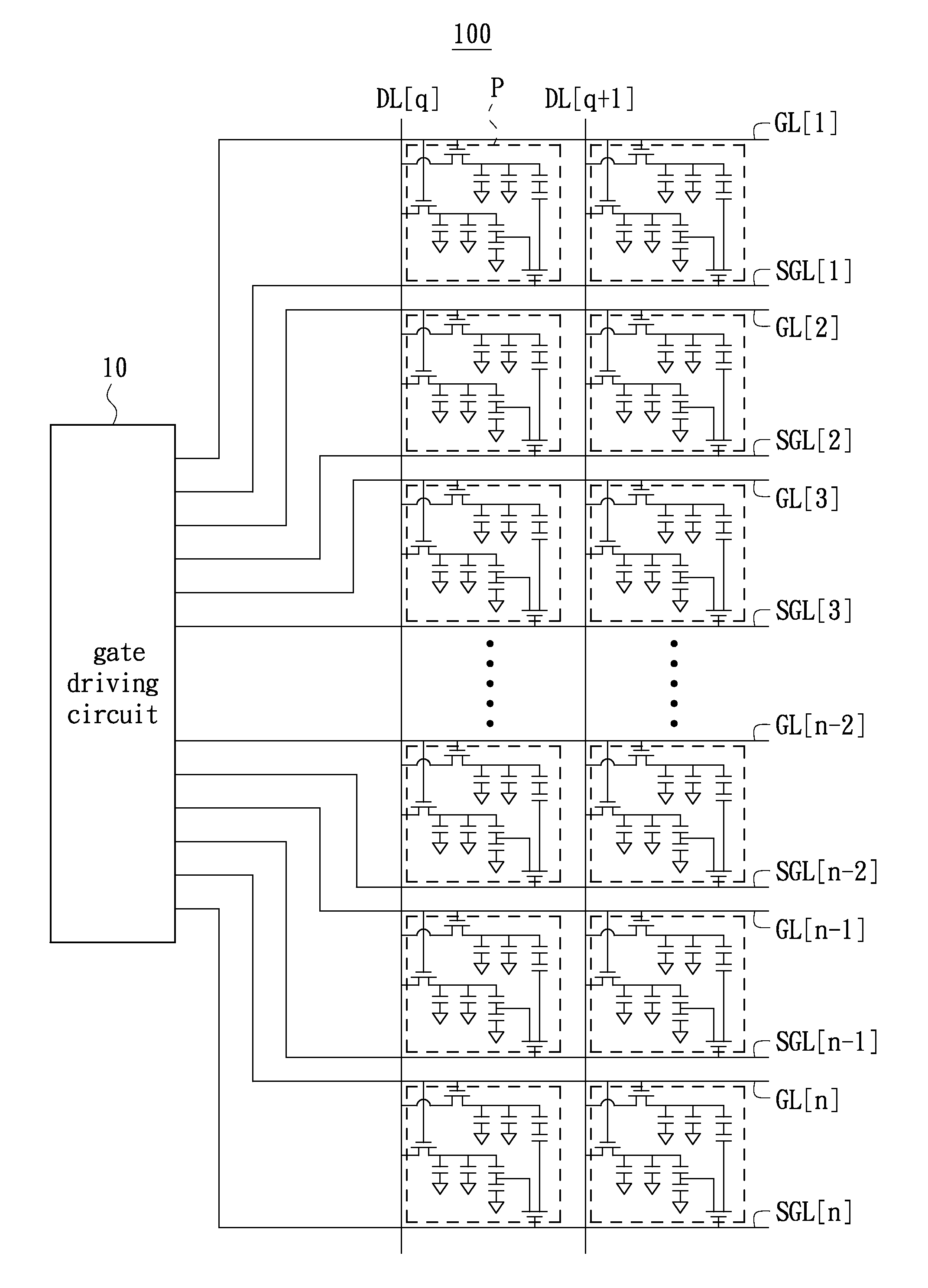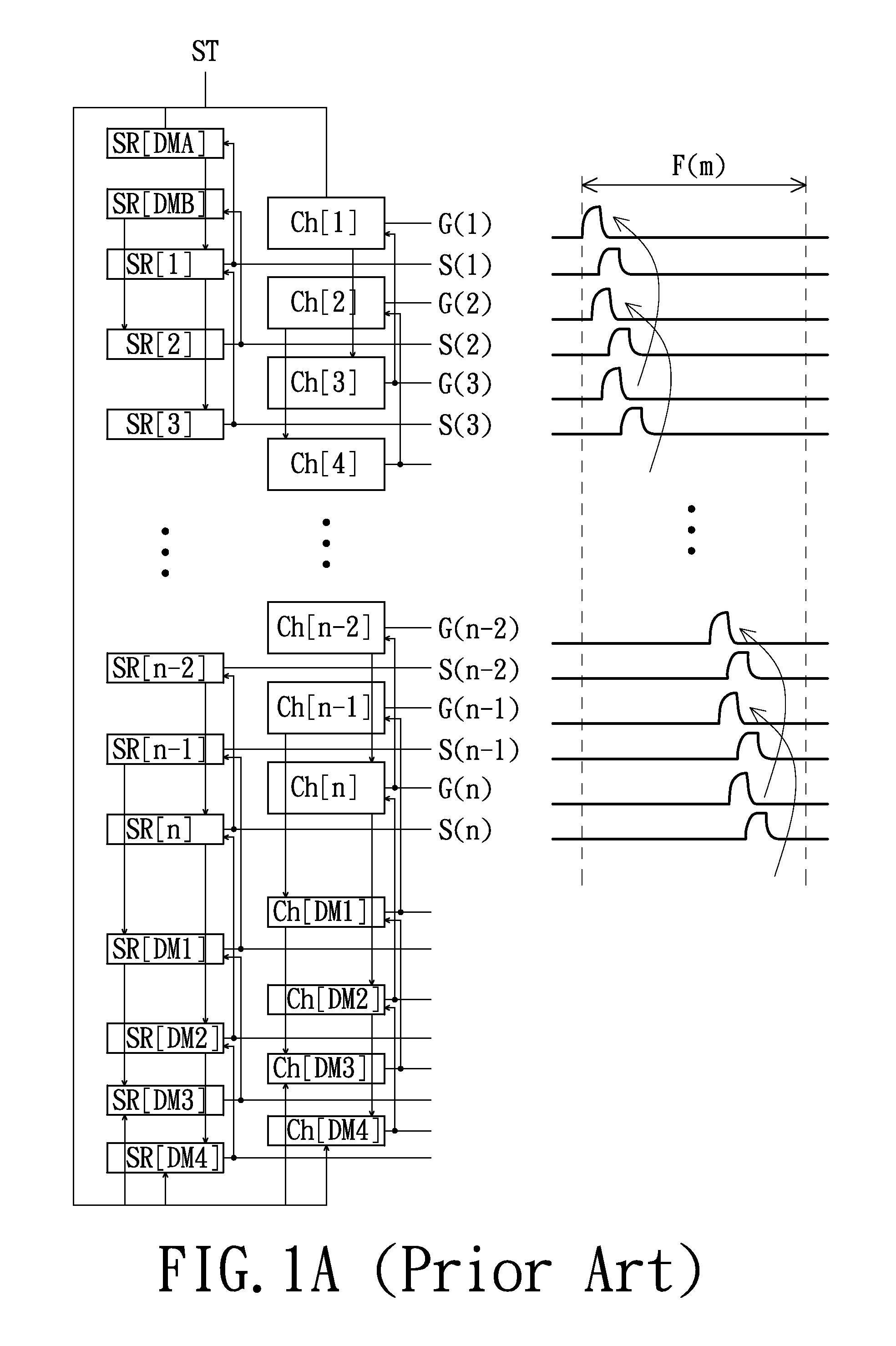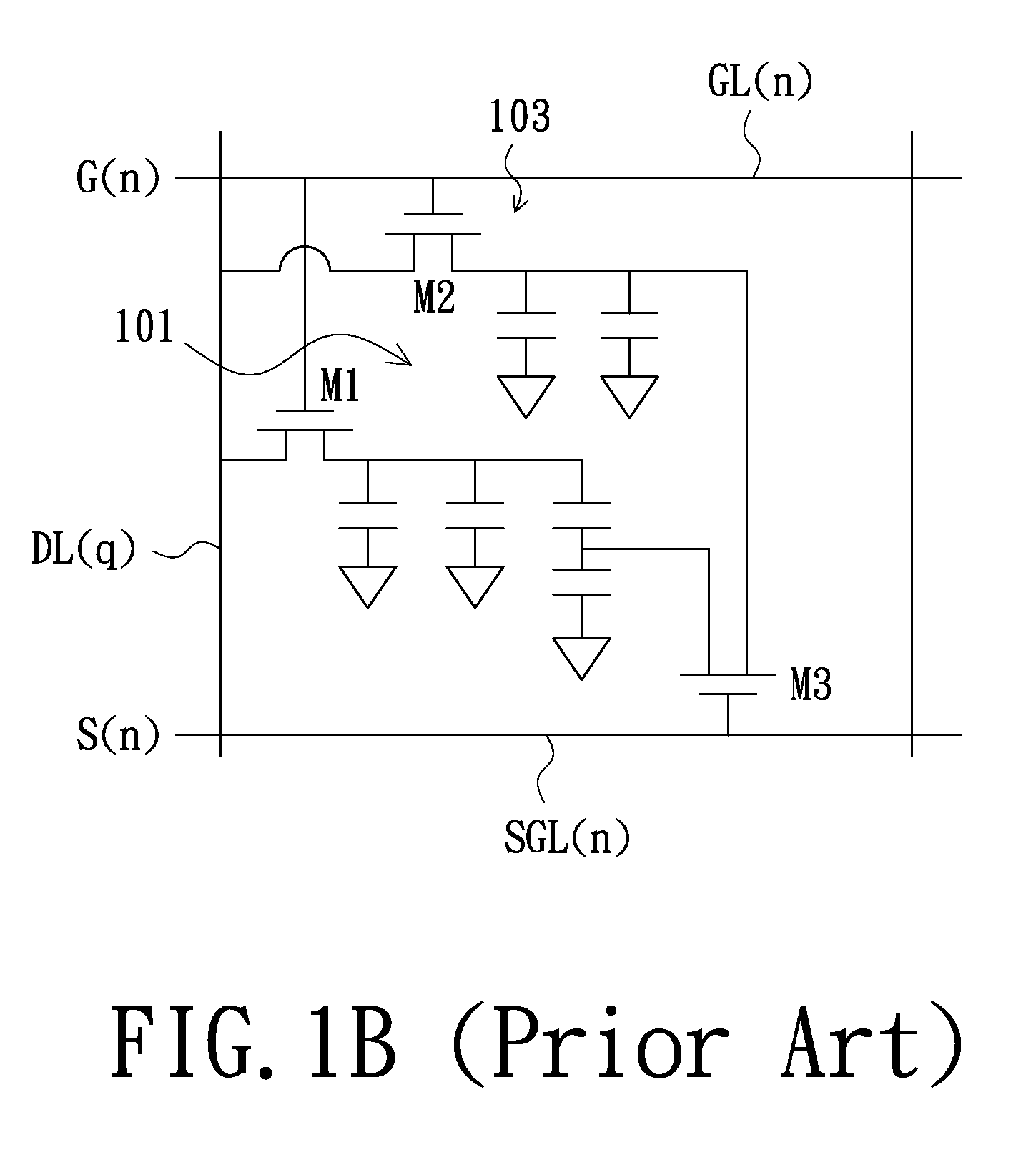Display panel and gate driving circuit and driving method for gate driving circuit
- Summary
- Abstract
- Description
- Claims
- Application Information
AI Technical Summary
Benefits of technology
Problems solved by technology
Method used
Image
Examples
Embodiment Construction
[0023]The disclosure will now be described more specifically with reference to the following embodiments. It is to be noted that the following descriptions of embodiments are presented herein for purpose of illustration and description only. It is not intended to be exhaustive or to be limited to the precise form disclosed.
[0024]Referring to FIG. 2, FIG. 2 is a schematic partial structure view of a display panel according to an embodiment. In the illustrated embodiment, the display panel 100 may be a liquid crystal display panel or other kind of active-driven display panel, and includes a gate driving circuit 10, multiple pixels P, multiple data lines such as DL[q] and DL[q+1], multiple gate lines GL[1]-GL[n] and multiple sharing control lines SGL[1]-SGL[n]. Each of the data lines DL[q] and DL[q+1] is used to provide display data to corresponding pixels P. Each of the gate lines GL[1]-GL[n] is electrically coupled to the gate driving circuit 10 and disposed crossing over the data li...
PUM
 Login to View More
Login to View More Abstract
Description
Claims
Application Information
 Login to View More
Login to View More - R&D
- Intellectual Property
- Life Sciences
- Materials
- Tech Scout
- Unparalleled Data Quality
- Higher Quality Content
- 60% Fewer Hallucinations
Browse by: Latest US Patents, China's latest patents, Technical Efficacy Thesaurus, Application Domain, Technology Topic, Popular Technical Reports.
© 2025 PatSnap. All rights reserved.Legal|Privacy policy|Modern Slavery Act Transparency Statement|Sitemap|About US| Contact US: help@patsnap.com



